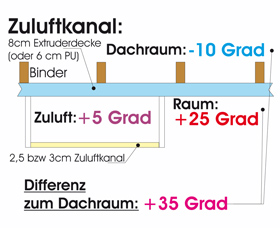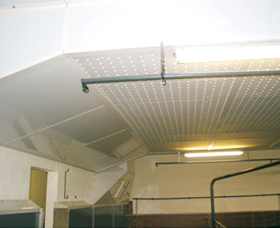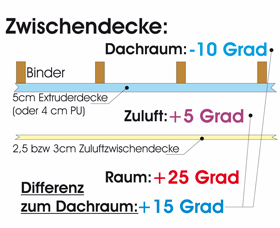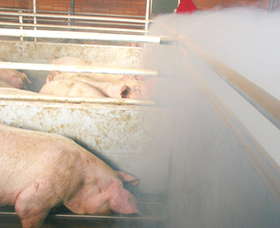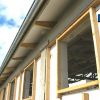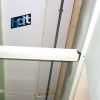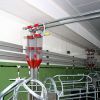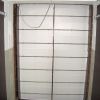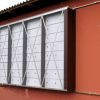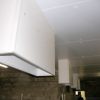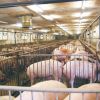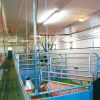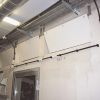Supply Air / Duct
During the design of the supply air system, each stable must be looked at individually!Because: There is no single perfect supply air system. The question about which supply air system is needed depends on numerous criteria, such as Supply air temperature, stable size, pen size, stable height, etc. These things need to be incorporated into the planning, as well as the position of the air ducts and vents. Making compromises at this point is a mistake. Feed alley ventilation where possible and trickling-channels where necessary or also air vents when it is necessary for this particular stable. The supply of the central walkways is also an important point which must be included in the overall concept. Only in this way can a supply air system ensure proper ventilation for animal and operator under all operating conditions (summer + winter). Building requirements often determine the supply air system. The different ventilation variants must be considered carefully. Even in the planning stage the correct direction must be chosen.
Supply Air Duct
This supply air duct variant with different types of perforated panels has been proven itself very well over the last 15 years. In stables with a low amount of perforated panels this ventilation variant is still the optimal choice. With proper planning good air distribution will ensure that there is no draft in the area where the animals are. The new material makes cleaning very easy. There is very little pressure loss. The heat transmittance through the ceiling (see diagram) is somewhat higher than the suspended ceiling solution.
Suspended Ceiling
We built a suspended ceiling system for the first time in a sow house for 750 sows in the Muenster area in 1997 (here we were also the innovative forerunner). There are many possibilities with this system especially in large facilities with small pre-chamber sections. This system particularly suited for stables with a high number of perforated panels (fattening and piglet rearing). The heat transmittance through the ceiling is less than with the supply air duct variant (see diagram). Otherwise there are the same advantages as with the perforated panel duct.
Feed Alley Ventilation
The classic feed alley ventilation can be integrated very well into rooms up to 120 animals (or double sections with 240 animals). The structural requirements must exist. However, it is important that the air This is not advisable in farrowing areas due to improper supply air. Only conditionally in piglet rearing houses, preferably in conjunction with heat recovery. The higher air temperatures (see chart) should be taken into account with the energy balance.
Slot Ventilation
If the classical feed alley ventilation can no longer be used due to the compartment size, this system offers an alternative solution. Here instead of taking the air through the vents from the loft, we recommend integrating a supply air duct solution with the possibility of a heat recovery system. Furthermore, the warming of supply air in the loft on hot days is prevented. This supply air is not recommended for sow stables and piglet rearing stables, due to the short warm-up time of the incoming air. This type of supply air system should only be installed in final fattening sections with more than 140 animals.
Individual Solutions
Of course there are several other systems that can be used in one case or the other. However, we want to limit the systems to those which have proven themselves over years in reallife situations. We work with you to find an individual solution together. We always find the suitable solution for your stall. One important issue when talking about ventilation is the energy sector. We go to great lengths to ensure there is not even a small pressure loss (also over years), to keep your energy costs down as much as possiblehalten. Just ask us! We know our business - it's is all we do!
Images of: Supply air
Interessantes zum Thema aus dem hdt -Online Archiv
|





